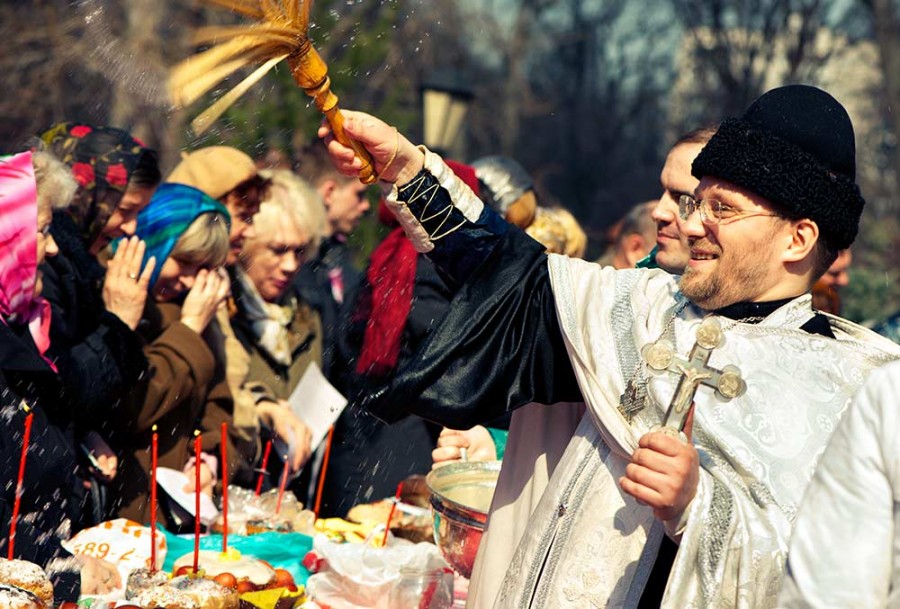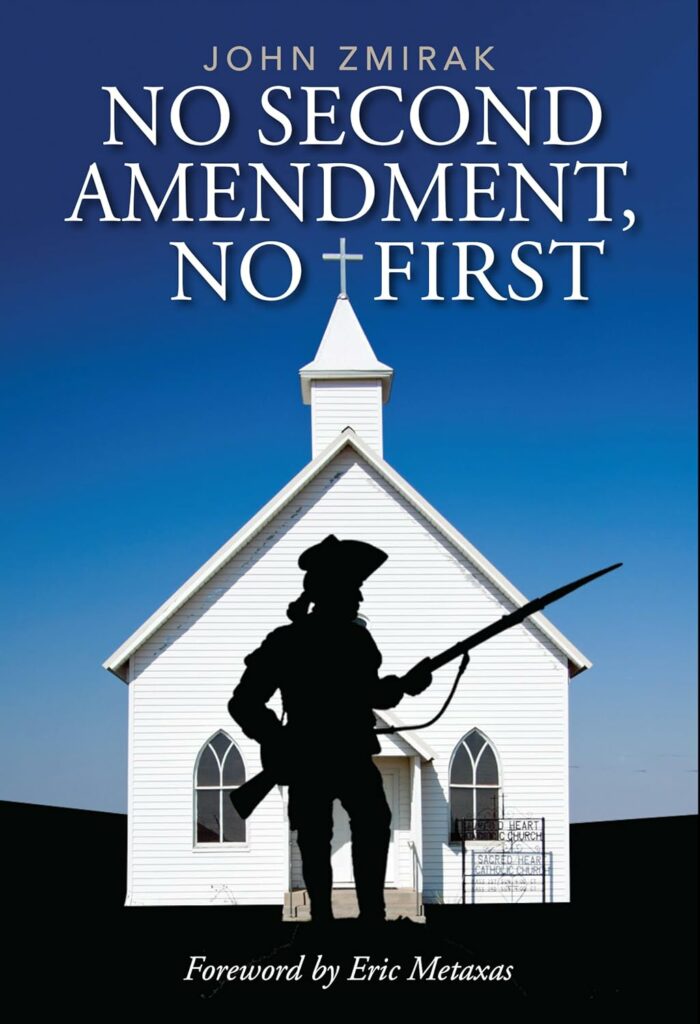‘Embodied’ Worship Boosted Orthodox Churches During the COVID-19 Pandemic
Orthodox clergy were the most reluctant to promote vaccination and encourage online worship

The “embodied” worship style of Eastern Orthodox churches, with their resistance to liturgical innovation and online worship, as well as a reluctance to promote vaccination, were key factors in triggering numerical growth during the pandemic, a landmark study has revealed.
According to “Stubborn or Persistent? How American Orthodox Christian Churches Dealt with and Recovered from the Pandemic,” “Even at the height of the pandemic, many more Orthodox parishes (44%) did not close their doors as compared to other U.S. religious congregations (12%) and instead continued holding in-person worship services.”
The 25-page research paper published on August 21 by Exploring the Pandemic Impact on Congregations is authored by religion sociologist Alexei Krindatch, and shows how Orthodox churches navigated “disruptions and forced changes brought by the pandemic” better than other denominations did.
“No Vax” Priests
“Additionally, compared to other clergy, Orthodox priests were much more reluctant to publicly encourage their members to get vaccinated,” Krindatch observes. Compared to 62% of U.S. pastors, only 31% of Orthodox priests promoted the jab.
According to Krindatch’s research, even fewer Orthodox parishes invited medical professionals to address their congregation about COVID-19 than other denominations did.
The 25-page research paper shows how Orthodox churches navigated “disruptions and forced changes brought by the pandemic” better than other denominations did.
The “most obvious distinction” between Orthodox parishes and other congregations was the fact that “the former were more likely to continue meeting and worshipping in person throughout the pandemic and also less likely to bring up the subject of the COVID-19 in congregational life,” Krindatch writes.
The more a denomination’s liturgy emphasized worshipper’s physical presence, engaged all senses, and demanded abundant in-person interaction, “the more in discord it was with adaptations triggered by the pandemic, such as online worship and virtual participation in congregational life,” Krindatch observes.
Embodied Worship
The study explains that Orthodox Christianity is “a prime example of such a highly ‘embodied’ church tradition” requiring “praying together in complex, multi-sensory services (e.g., processions, chants, incense)” with “many physical interactions (e.g., kissing the Cross, icons, and the priest’s hand; receiving Holy Communion with a shared spoon from a common chalice).
“Similarly, after services, animated multigenerational gatherings — frequently spiced with ethnic potlucks — are also ‘must do’ activities in many Orthodox parishes,” the sociologist points out. “Compared to the Roman Catholic or Episcopal churches, Orthodoxy places a much greater emphasis on preserving things the way ‘they have always been.’”
Even though Catholics and Anglicans are more “traditionally liturgical and highly embodied” with multisensory liturgical protocols similar to the Orthodox Church, they are willing to adapt to the changing circumstances, Krindatch says.
Virtual Worship
To substantiate his claim, Krindatch notes that only 12% of Orthodox churches offered prepandemic online worship, compared to 20% of other Christian denominations. By spring 2023, three-quarters of all congregations were worshipping remotely, compared to only slightly over half of the Orthodox parishes.
However, in early May 2020, while almost two-thirds of Orthodox parishes (64%) offered online worship, this percentage did not grow any further throughout the next two years of the pandemic.
Please Support The Stream: Equipping Christians to Think Clearly About the Political, Economic, and Moral Issues of Our Day.
Further, when congregations offering online services were asked if they would still be offering a virtual worship option in five years, 81% of all congregations responded affirmatively vs. 70% of Orthodox parishes.
In terms of finances, before, during, and immediately after COVID-19, a slightly greater percentage of Orthodox Christian parishes reported they were in either “good” or “excellent” financial health compared to the national sample the study shows.
Financial Giving
Significantly, during the pandemic, Orthodox parishioners were more likely to support their churches with an increased amount of donations than were the members of other U.S. denominations, perhaps as a sign of gratitude for places “where they still could have an in-person experience of a close-knit local community.”
According to the study, Orthodox parishes were also more successful than other congregations in acquiring new members through the pandemic. simply because they remained open. By spring 2023, 15% of the members of a typical Orthodox parish were new people who had joined since the start of the pandemic, compared to only 10% among other churches.
The study noted that there is no single Orthodox Church in the U.S., but several jurisdictions like the Greek Orthodox Archdiocese, the Orthodox Church in America, and the Antiochian Orthodox Archdiocese, which are independent but share communion with one another.
There were minor setbacks in recruiting volunteers, the study acknowledges.
While Orthodox parishes also retained a higher level of volunteering than other denominations, by spring 2023, the percentage of regular volunteers in Orthodox parishes has declined to 25%, while other U.S. religious congregations nearly recovered their pre-pandemic level of volunteer engagement (35%).
Nondenominational Evangelicals Resist Lockdowns
A 2023 study published in the Journal of Contemporary Religion concluded that non-denominational evangelical churches that are not considered part of a mainline evangelical denomination were more likely to seek ways to remain open in defiance of public health orders.
A paper titled “Healing, faith and fear: church opening in the United States during COVID-19 restrictions,” by Naomi Smith and Anne-Marie Snider show how leaders of nondenominational evangelical churches like Pastor John MacArthur of California’s Grace Community Church and Pastor Rob McCoy of Godspeak Calvary Chapel near Santa Barbara resisted lockdown mandates.
Many of these churches fought the restrictions through lawsuits funded by religious nonprofit organizations like the Thomas More Society and the Alliance Defending Freedom, the paper notes.
At the same time, “‘mainline evangelical’ denominations with smaller representation, such as Lutherans, Quakers, and Presbyterian Church USA, continued to abide by social distancing measures, regardless of what “largely evangelical” denominations (such as Baptist, nondenominational, and Pentecostal) were practicing,” the authors argue.
Pastors who resisted the lockdowns often preached on divine protection from the coronavirus, especially within the physical confines of the church, and invoked the power of the blood of Jesus Christ for protection from COVID-19, citing biblical verses like Isaiah 53:4-5 and 1 Peter 2:24.
The pastors of these churches also preached against fear, citing verses in the Bible that exhort Christians not to live in fear and “reassure believers that God is in control and actively works to protect and strengthen the faithful,” the authors observed.
Resistance to the lockdowns and the insistence to continue to worship in person was also made possible “by the affluence of many of these churches and their ability to access financial, legal, and social resources (including press attention),” the paper concluded.
Dr. Jules Gomes, (BA, BD, MTh, PhD), has a doctorate in biblical studies from the University of Cambridge. Currently a Vatican-accredited journalist based in Rome, he is the author of five books and several academic articles. Gomes lectured at Catholic and Protestant seminaries and universities and was canon theologian and artistic director at Liverpool Cathedral.


